In May 2016 the residents of a quiet street in Oxford became the latest participants in a drama played out somewhere in the UK on an almost monthly basis: a mass evacuation triggered by the discovery of an unexploded Second World War bomb.
The incident – swiftly dealt with by experts – was the latest in an apparently growing number of similar discoveries. Last year, in London alone, more than nine wartime German bombs were discovered. Many of which were still capable of inflicting devastation on a massive scale.
And yet for every item of unexploded ordnance (UXO) that’s found on land, experts estimate that there could be tens of thousands more lying on the seabed around the UK: the explosive legacy of two world wars, decades of test-firing and dubious munitions-dumping practices that only ended in the 1990s.
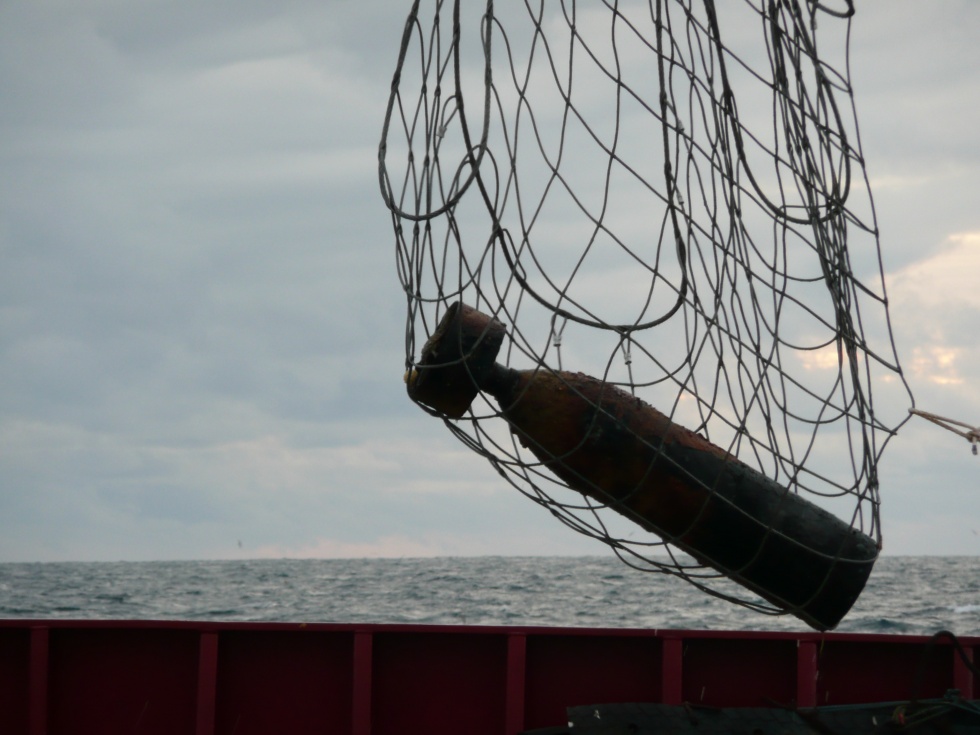
For most of the 20th century this wasn’t an issue. Engineers working in the oil and gas sector would occasionally encounter the odd item, and fishing trawlers would sometimes land an unexpectedly hazardous catch, but the bottom of the sea was generally seen as the safest place for it. However, thanks to the relatively recent and rapid growth of the UK’s offshore renewables sector this is no longer the case.
Today, the seabed around the UK, home to some of the world’s biggest offshore energy projects, is the site of unprecedented levels of subsea activity.
And the pressure to ensure that these projects are completed safely and on time is driving ever more innovative solutions to the challenge of detecting, identifying and dealing with subsea UXO.
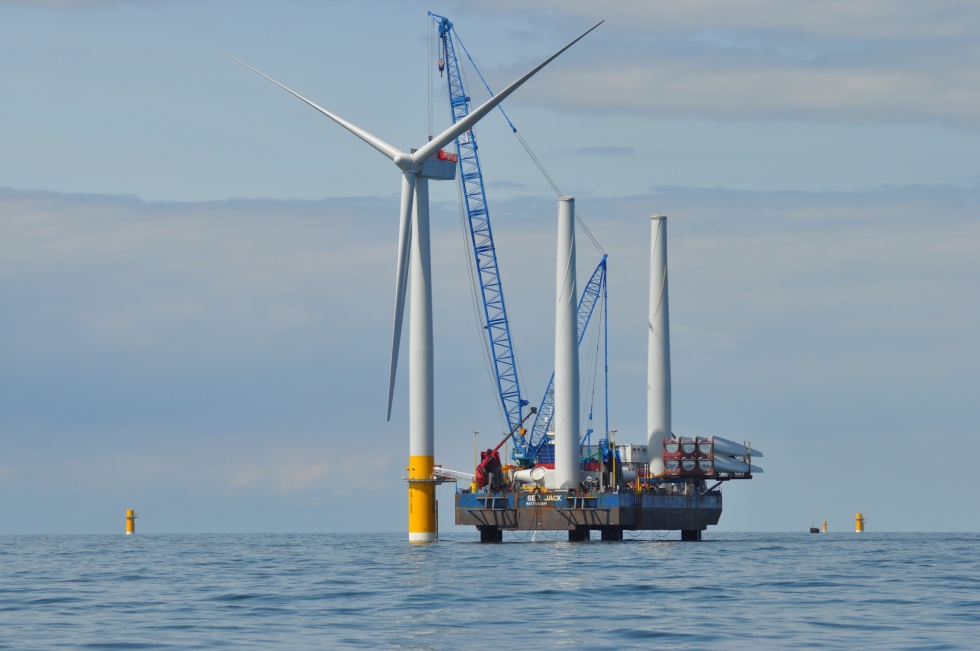
One person at the sharp end of this growth industry is Dave Welch, a former Royal Navy bomb-disposal expert, who now runs one of the UK’s leading Explosive Ordnance Disposal (EOD) consultancies, Ramora UK.
While Ramora regularly carries out bomb disposal on land, offshore UXO accounts for an increasing amount of the company’s work, said Welch. “There are more and more wind farms going in and they’re all finding items. Since 2009, as a company, we’ve seen a steady increase from four or five a year to the point where last year, on one job alone over a three-week period, we did 40.”
According to Welch, many items that are found are inert or empty, others are live – i.e. they haven’t yet been fired and therefore aren’t prepared for detonation. Some, however, are what is termed as ‘blind’. In other words they’ve been dropped or fired and for some reason haven’t detonated. A stray nudge, knock or sudden increase in temperature could, in theory, set them off.
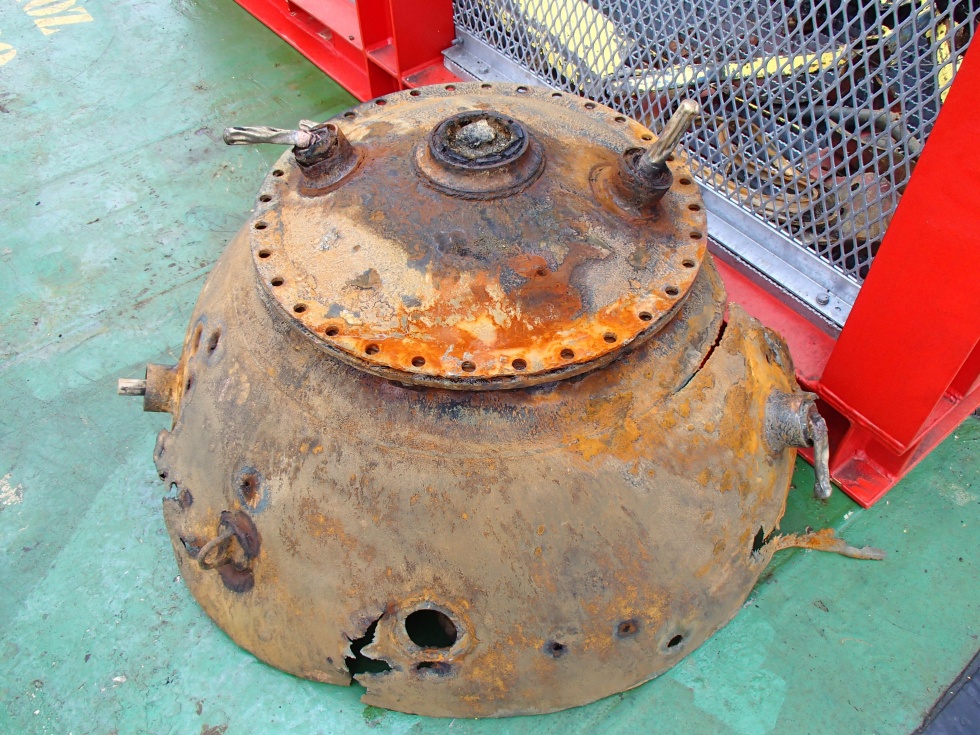
Unsurprisingly, wind farm developers, ever wary of fickle investor confidence in what’s still a relatively young sector, are reluctant to discuss the issue.
And when they do, they tend to steer well clear of suggesting that this is anything other than a problem that can easily be dealt with. “It very much depends on the area and even then I would put it on to the category of precautionary,” said Matthew Green, a project director at energy giant Vatenfall.
Nevertheless, managing the UXO risk is increasingly seen as a critical part of the development process and has become one of the biggest drivers of subsea innovation today.
Today, 60 per cent of our renewables work is UXO-related
The process begins with some good old-fashioned detective work, in which a UXO consultant will pore over historical data relating to sunken ships, firing ranges and so on to provide developers with a risk assessment of what, if anything, they might find in a particular area. Specialist marine contractors will then head out to the site and deploy a range of different techniques to survey the seabed and identify objects of potential interest.
One of the major players around the UK is specialist marine survey contractor Bibby HydroMap. “Today, 60 per cent of our renewables work is UXO-related,” said geophysicist Caroline Tweedle.
Much of the surveying work involves the use of magnetometers: sensors that are able to detect the telltale magnetic signature of ferrous objects on, or even below, the seabed. These are typically towed by surface vessels, often in groups or arrays, which are able to measure the gradient of the magnetic field in order to provide a high-resolution image of anomalies at the survey site.
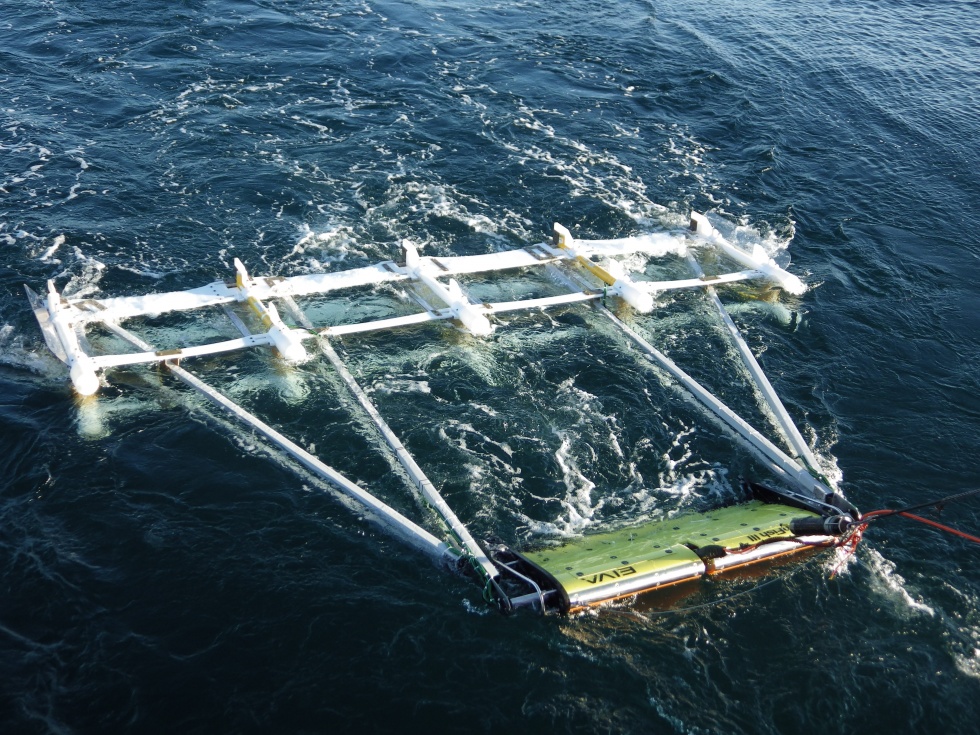
Time is of the essence and the energy industry’s demand for quick results is a major driver of innovation. “The competition comes down to who can put the most magnetometers out the back the quickest,” said Tweedle, “innovation is focused on trying to cover more ground, in more detail, more quickly than has been possible in the past.”
With this in mind, Bibby HydroMap is currently trialling a system in the North Sea that will have a three-winged towed array of magnetometers designed to fly just 3m above the seabed. “This has a detection range of about 12m and huge swathes of ground can be covered quickly,” said Tweedle.
Another major innovator in this area is Fugro, which is currently making waves with the Geowing: a fixed gradiometer array consisting of five magnetometers that are effectively able to tune out the magnetic signature from background geology, thereby reducing the number of false positives. The system is currently being used on a number of projects through Europe, the Baltic and the North Sea.
The choice of technology used also varies according to the environment. For instance, one of Fugro’s specialist areas is carrying out surveys in near-shore environments where mobile sand and shallow waters create a range of challenges that aren’t encountered further out to sea.
“One of the key parameters is altitude above seabed,” said Fugro geophysicist Thomas Harris. “When you’re in shallow water you’ve still got to operate the equipment safely in among tides. You’re jumping in, doing a bit of surveying; it’s quite a dynamic environment.”
Around 80 per cent of explosives found on the seabed are air-dropped iron bombs from the Second World War. And for these, magnetometry is the perfect solution. For non-ferrous items, however, such as the particularly dangerous air-dropped German sea-mines (which are made from aluminium), different approaches are required.
One solution to this problem is Bibby HydroMap’s dROP system – a compact, remotely operated vehicle (ROV) that receives much of its propulsive power from a surface support vessel and is claimed to represent an easier-to-deploy solution than many larger ROVs.
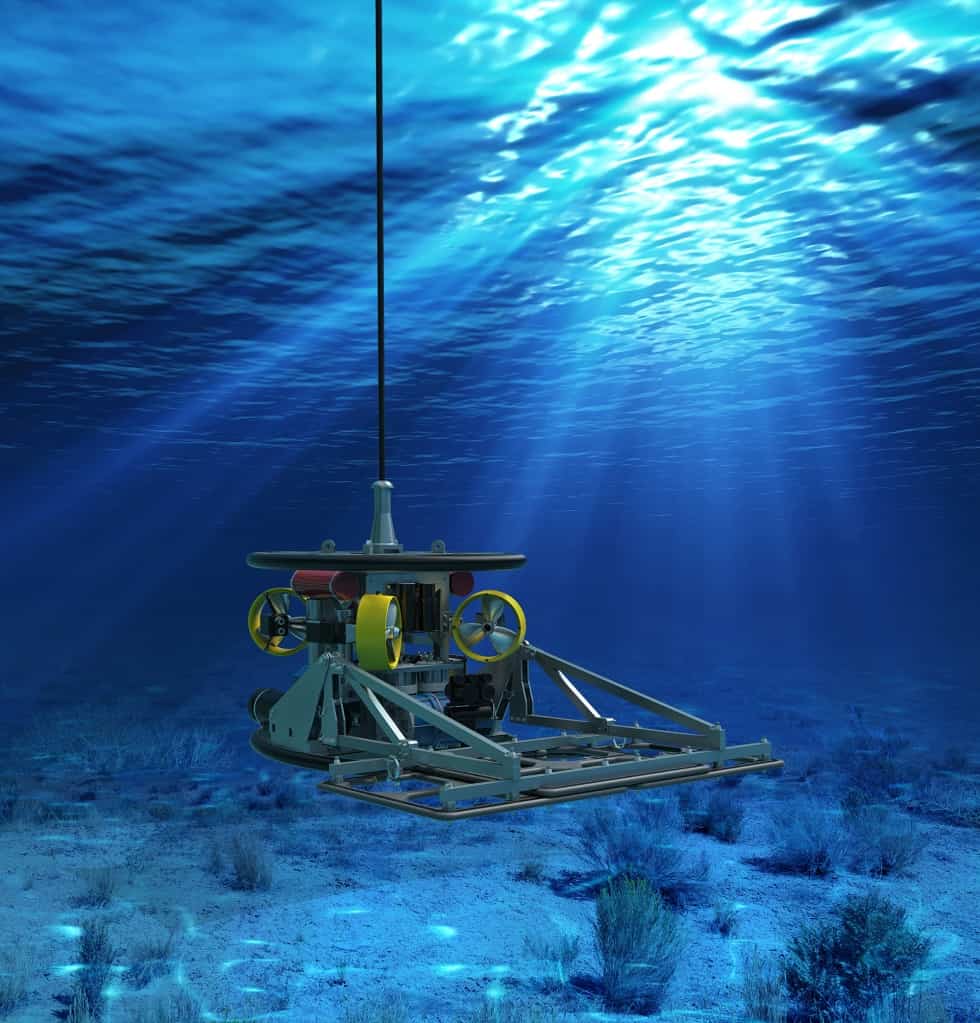
The advantage of a system such as this, according to Bibby geophysicist David Rider, is that it can be equipped with a variety of different sensors.
One that’s been particularly effective is a so-called Sub-Bottom Imager (SBI) developed by PanGeo Subsea. According to Rider, this advanced acoustic system can provide a real-time 3D view of the ground beneath the seabed down to a depth of up to 5m.
Further into the future, Rider said that dROP could also be the ideal platform for subsea versions of advanced electromagnetic (EM) detection systems that are currently being used on land.
An example of this is MetalMapper, a US-developed system hitherto used on land that’s able to distinguish items of ordnance from scrap metal. “This does EM readings in three axes, said Rider, “by comparing the decay curve in each axis they can compare it to a library of known items – and it will reduce the number of false positives. The dROP would be a really good platform to use for this, as you can go really slowly, and even hover.”
Whichever technique is deployed there is still a heavy reliance on surface support. However, some believe that continued developments in autonomous underwater vehicle (AUV) technology could change things dramatically in the years ahead.
One firm eyeing up the opportunity in this area is AUV manufacturer Kongsberg Maritime. Indeed, the company’s marine robotics sales director Richard Mills claimed that for many applications AUVs could have considerable advantages over existing approaches. “The whole aim of an AUV is that you put a range of sensors together on a single platform collecting all of the data at the same time and you get to put it very close to the sea floor, without a tether, without a ship close to it, and without a 3-tonne workhorse ROV. It’s a better cost option,” he said.
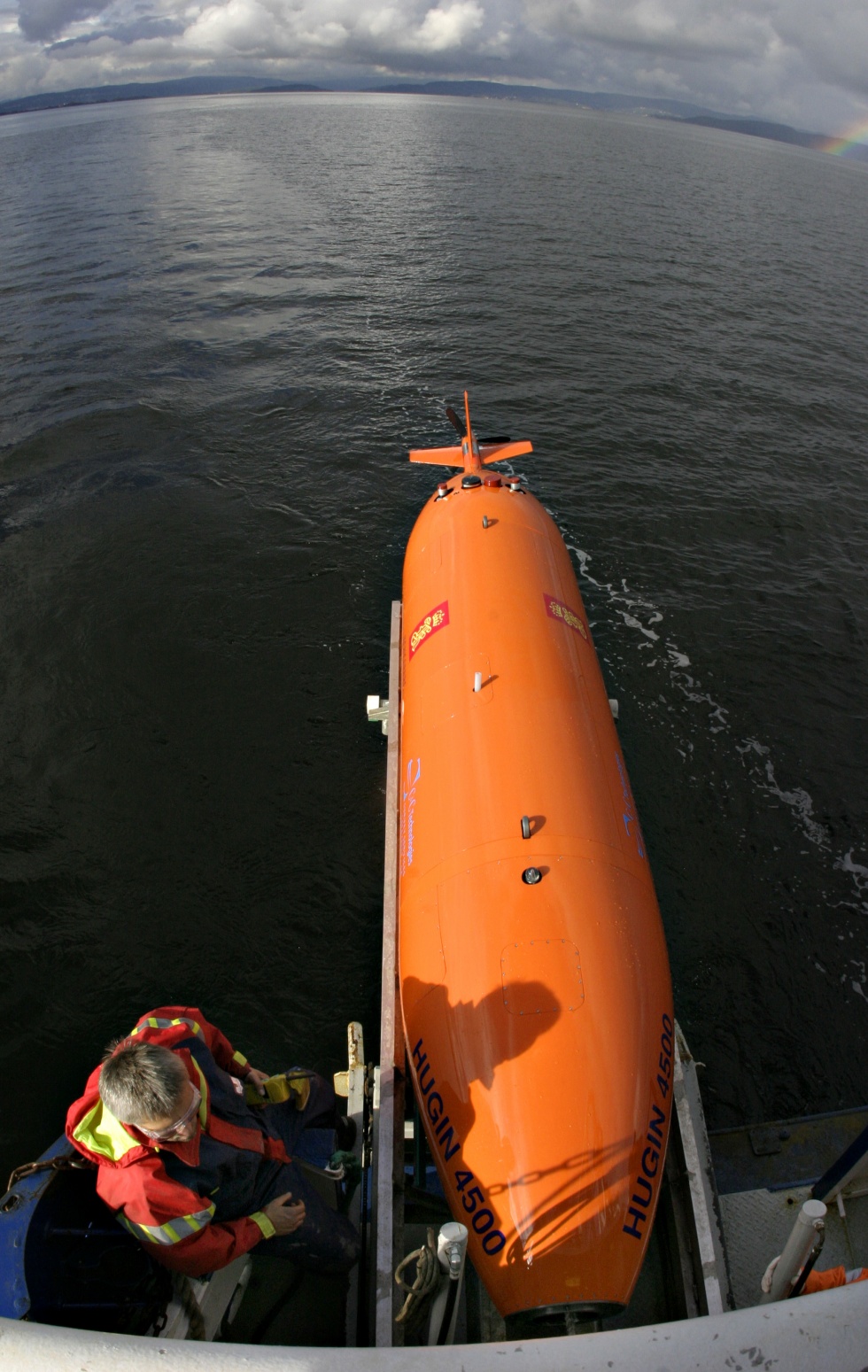
The offshore energy sector is already a major customer for Kongsberg’s Hugin vehicle, an unmanned sub originally developed for mine clearance that Mills describes as a “pick-up truck”: i.e. much of its real power lies in the payload of sensors and sonar systems that can be bolted onto it.
A good example of this is Kongsberg’s HISAS system, a wideband synthetic aperture sonar that combines a number of acoustic pings to form an image that has a much higher resolution than conventional sonars.
“With a traditional sonar you have degradation in resolution the further away it gets from the source,” explained Mills. “With this one using some clever processing we actually synthesised more than 30 returns from a single ping, which gives what we call a multi-aspect view of a target and allows us to resolve the resolution right down to, in theory, about 2 x 2cm – regardless of whether it is 5m or 300m from you.”
The technology is suitable for detecting and identifying seabed munitions, he claimed. “If you have the tail fin of a Second World War bomb sticking up out of the silt you’ll be able to see the tail fin, tell which way it’s oriented, and potentially identify not only that there’s an object there but also what type of object it is.”
But the bomb-hunting capabilities of AUVs could perhaps be even further enhanced by some recent developments in magnetometry.
Fitting magnetometers to AUVs has hitherto been challenging – with electromagnetic interference from the vehicle’s systems severely impacting upon the technique’s usefulness.
However, thanks to a collaboration with Canadian firm Ocean Floor Geophysics, Kongsberg now offers a system that uses a clever algorithm to tune out all of these variable signals, and collect reliable MAG data from the seabed. This breakthrough could, said Mills, potentially help usher in a new era of AUV-based magnetometry.
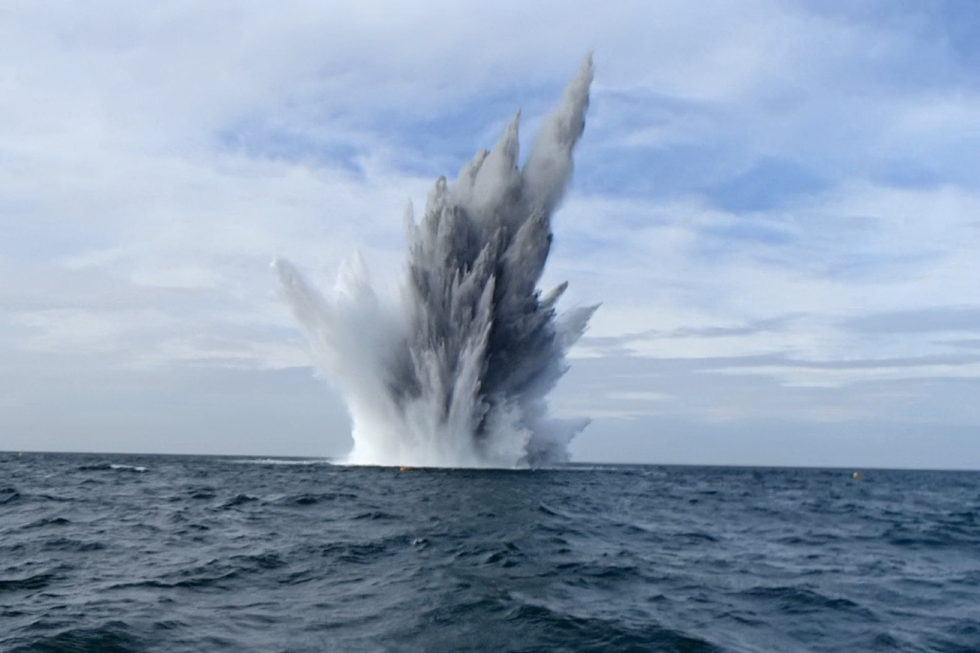
In the longer term, while new sensors will continue to emerge, Mills believed that continued developments in autonomy, which will enable AUVs to react in real time to sensor data and even classify specific items of ordnance, will drive the technology’s use for UXO detection.
For now, however, these decisions are left to the UXO experts. And once anomalies have been detected, it’s back to specialists such as Ramora to interpret the data and figure out how to make the site safe.
“We need to determine whether these items are anywhere near an asset,” said Ramora’s Dave Welch, “can they be destroyed where they are? If they can, we just deploy charges and deal with them or relocate them to a safe area for disposal.”
we’ve never had an item of ordnance detonate at a point where it was not intended to do
In some respects, dealing with subsea ordnance is simpler than handling items on the land: there are fewer neighbours to worry about, and the seawater is a great blast insulator. What’s more, despite a growing number of finds, the risks posed by these items are now very well understood. “We’ve done a lot now, we’re into the hundreds, we’ve never had an item of ordnance detonate at a point where it was not intended to do so. Generally speaking, treat them with respect and avoid heat shock and friction, and you won’t go far wrong,” said Welch.
Nevertheless, there has been a high level of technical innovation and development over the years, which has been primarily focused on enabling the job to be performed more quickly and removing the need for human divers.
In Ramora’s case this has meant the development of a system known as REODS (Remote Explosive Ordnance Disposal System): a kit of bolt-on components that can be used to rapidly turn any type of ROV into a specially adapted vehicle capable of performing many of the tasks once carried out by divers.
During a typical relocation operation, an ROV equipped with this technology will attach a hydraulic claw mechanism to an item of subsea ordnance before moving away from the explosive and remotely initiating a ‘lift bag’ system that will raise the item of ordnance from the sea floor. This lift bag can then be connected to a towline, which is used to move the explosive out of harm’s way for detonation. Commenting on the capabilities of the system, Welch said: “We can pretty much deal with any subsea explosive disposal now down to any depth.”
Vatenfall’s Matthew Green echoed Welch’s faith in today’s processes for dealing with the problem of explosive material on the sea floor. “As we’re getting more familiar with performing these surveys, and more comfortable with the methodology and the principles, we’ve been able to include the UXO campaign into our normal development and construction periods”, he said.
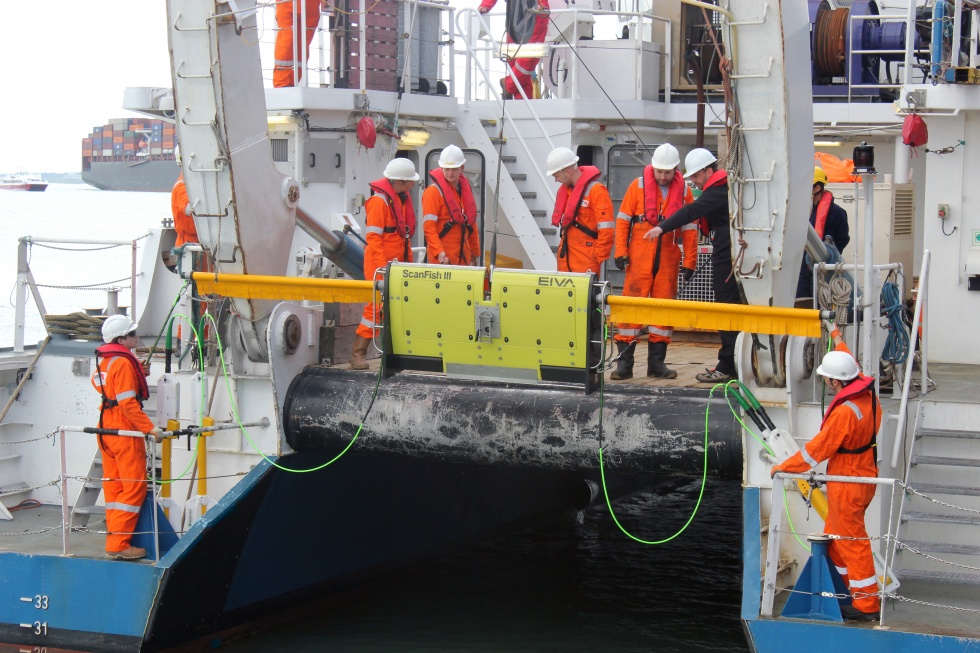
But, according to Welch, the sector still has some important lessons to learn if it wants to deal with the issue as smoothly as possible. “If you don’t plan ahead you can be tripped by all manner of unexpected regulations,” he said, citing a recent incident on the Rampion wind-farm project, where UXO disposal was held up by the fact that the Whiting breeding season was taking place.
It’s really the driving force in an awful lot of innovation
One thing’s for sure. With offshore development showing little sign of slowing down, the problem of subsea UXO isn’t going to go away. And with developers targeting an increasing range of locations – from far out to sea, to much closer to land – this unique challenge will continue to drive subsea innovation for many years to come. “It’s only going to get more challenging,” said Bibby HydroMap’s David Rider, “and at the moment it’s really the driving force in an awful lot of innovation.”




Red Bull makes hydrogen fuel cell play with AVL
Surely EVs are the best solution for motor sports and for weight / performance dispense with the battery altogether by introducing paired conductors...